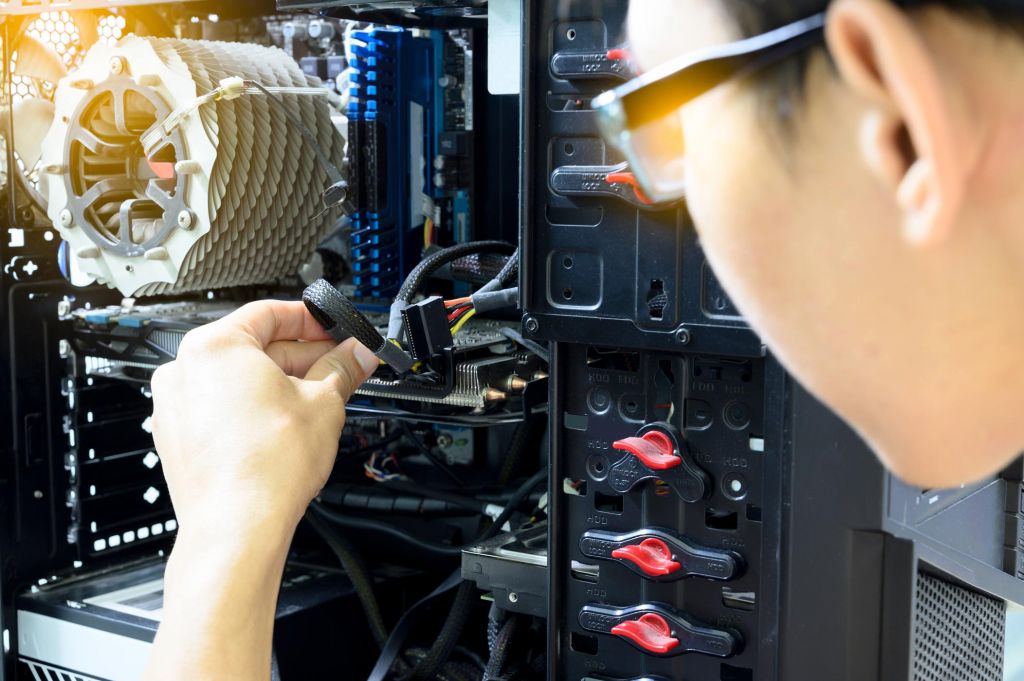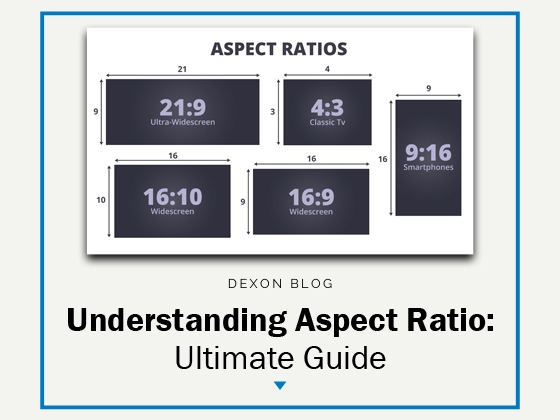AV Team: Key Members, Duties
When hosting an event, it’s important to have a dedicated A/V team who can help you optimize your operations and transform your presentations into a high production value affair. But, what is an AV team and what exactly do they do?
If you’re not sure of the answers to these questions, don’t worry. At DEXON, we ensure that our customers have all the information they need before considering hiring a full-size A/V team. To help you understand the true value of these professionals and what they can add to your AV setup, we’ve compiled this comprehensive guide that answers all your burning questions.
In this article, we discuss the definition of an AV team, explain their responsibilities, provide all the key information about the different roles and why it’s integral to use an A/V team for a successful A/V project.
What is an AV team?
Before we get into the specifics, let’s first cover the basics. An A/V team is a group of professionals who each take responsibility for an aspect of an A/V display. This team consists of lighting, sound, audio professionals, each operating equipment and ensuring their part of the display runs smoothly.
The A/V works collaboratively with the presenter or coordinator of the presentation, ensuring that they enact their wishes of their event at all times. These professionals also liaise with venues and ensure that locations are conducive to a successful display, such as through assessing the acoustics in a location or determining which equipment they need for the event.
An AV team can vary in size, with some teams consisting of many individuals taking responsibility for each individual A/V element. Alternatively, an AV team can be made of a single A/V specialist who integrates all elements of visuals, lighting and sound to provide an impressive display.
What does an AV team do? What are they responsible for?
Depending on the size of an A/V team and specialties, these professionals will have different responsibilities. For example, an audio engineer has significantly different responsibilities to a visual and video engineer who coordinates display technology like matrix switchers, video wall processors and controllers.
In summary, an A/V team coordinates the audio-visual elements of a presentation, ensuring that they acquire the correct equipment and understand how to use this in a way that delivers the best audience experience possible.
One of the key responsibilities that these professionals fulfill is setting up equipment. This can refer to transporting equipment between venues, ensuring that equipment is able to deliver high quality audio, visuals and lighting and repairing systems if they need it.
Additionally, these professionals consult with the host of a presentation and essentially bring their ideas to life! This means that an A/V team will assess the presenter’s project objectives and incorporate this into their operation strategy.
For example, if a presenter is aiming to produce an interactive, a visual engineer may use interactive devices such as interactive whiteboards or video walls to act on their objectives.
Responsibilities are likely to vary depending on the complexity of the event. Therefore, the A/V team will assess the project needs and plan things like the necessary A/V equipment, budgeting and venue accordingly.
During the event, A/V professionals are responsible for monitoring their A/V equipment performance for the duration of the event. This means that professionals use a variety of systems to ensure that faulty equipment doesn’t impact the overall event. These professionals will also coordinate with each other and ensure they produce the correct lighting arrangements to correspond with audio and visual cues.
Prior to the event, one of the key responsibilities that these professionals face includes testing the equipment and conducting dress rehearsals to identify the appropriate cues for lighting, sound and visuals. Conducting thorough testing prior to the event allows professionals to identify any faults and rectify them before the event begins, optimizing audience experience and ensuring that hosts can provide a professional and smooth presentation.
Who are the key AV team members and what do they do?
Here’s a guide to the key AV team members and what they’re responsible for during an A/V project:
1. Video engineer
Video engineers are responsible for the installation and maintenance of visual equipment such as cameras, displays, and the corresponding control equipment. These professionals ensure that all equipment operates to provide an impressive and engaging visual display that retains audience engagement throughout the experience.
Video engineers may work to ensure they display the correct input signals, optimize video quality and ensure that visuals link up with sound to produce a seamless display.
Video engineers work with a multitude of equipment, including interactive displays like video walls and the accompanying equipment. They will ensure that this equipment works in collaboration with each other, providing high-quality visuals across a video wall display no matter the size of monitor boundaries.
For example, a video engineer will work with equipment like processors and controllers to arrange footage across a video wall in the presenter’s desired arrangement throughout their event. Additionally, these professionals will work with equipment to display the correct content, such as streaming web-based content or splitting monitors to show different snippets of content on a video wall.
The key reason that video engineers are so integral is because these professionals play a crucial role in video quality. Good quality visuals can positively impact audience engagement levels, so it’s important to hire these individuals to improve audience experience.
2. Audio engineer
Audio engineers are responsible for operating audio recording equipment, speakers and microphones to ensure that the sound elements of a presentation match up to lighting and visual cues.
These professionals use technology like soundboards to produce accompanying sound effects to a presentation, playing a significant role in audience engagement. These professionals will consult with the host and make important decisions on the kinds of equipment that presenters need for a successful presentation. For example, audio engineers will help presenters decide whether using wired microphones or wireless options is better for their presentation style.
Again, these professionals are integral for audience engagement as they will assess whether the audience will be able to hear and immerse themselves into the presentation experience.
3. Lightning director
Lighting directors are responsible for establishing the mood and atmosphere during an event by manipulating lighting equipment to match audio and visual cues. These professionals work with a multitude of systems that arrange lighting, color and texture in a venue.
Lighting directors work from cues within the rest of the event such as audio or visual cues and arrange their lighting to accompany the atmosphere in the venue.
A lighting director also ensures that lighting equipment works in collaboration with other A/V equipment and liaises with venues to understand whether their lighting equipment is suitable for the type of event they’re hosting.
Directors play an important part in holding audience engagement, ensuring that they provide an exciting and engaging visual experience to accompany the rest of the event.
Are there any additional roles in an AV team?
Despite these three professionals making up the primary bulk of an A/V team, there’s actually other professionals that you may wish to include in your A/V team to optimize your display and resulting video footage:
1. Set designers
Set designers are critical professionals who help to set the stage for your event. These professionals will design the scenery for your event, arranging the venue to match the theme of the event.
For A/V displays, these professionals play an important role in ensuring that stages are set in a way that isn’t distracting for the audience.
2. Editors
Editors work with all members of an A/V team to edit visual and sound recordings from an event. These professionals work with editing software to enhance events by snipping clips together, enhancing video quality or editing audio to better fit visual footage.
Editors play an important role in making video footage engaging, as they have the ability to manipulate footage, produce effects and overlay sound.
Why is it really important to have a good AV team?
The importance of having a good A/V team to coordinate your event lies within audience reaction. A standard event with poorly coordinated lighting, visuals, and sound is likely to bore your audience, meaning your message is easily lost. One of the best ways to boost engagement and ensure your audience is immersed in the A/V experience is to use an A/V team who can help an audience connect with your presentation, leaving them with a lasting impression of your event!
Here are some other reasons why it’s important to use an A/V team:
- Reduces the number of faults within your presentation
- Ensures that you properly maintain your A/V equipment
- Makes presentations much easier to follow
- Manages the presenter’s own workload
Final thoughts
In summary, using an experienced A/V team to optimize your event is a great way to boost audience engagement and provide an edge to your presentation. This can also help you get the most out of your A/V equipment, ensuring you reap the full benefits of complex technology like switchers, processors and matrixes. To find out more insider A/V tips and tricks to improve your events, check out DEXON’s blog or browse our product family to find technology that can help you take your event to the next level!









